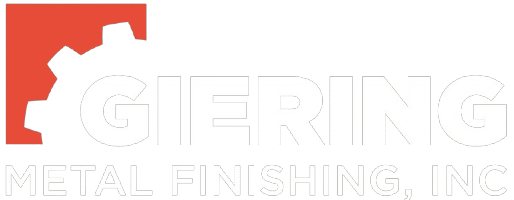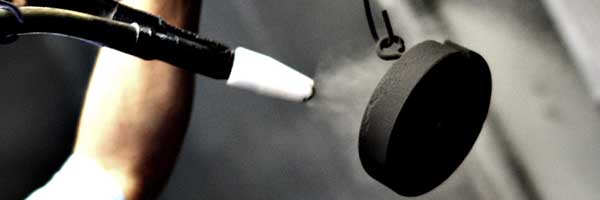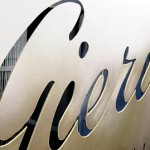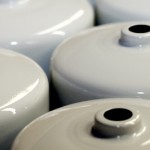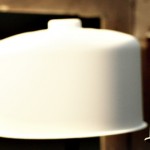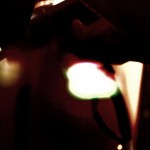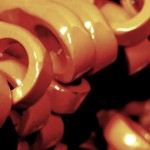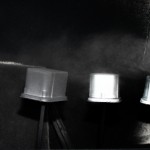- We have several powder coating lines to offer a wide range of production capability: fully automated powder coating systems (overhead conveyor & chain-on-edge) for high volume jobs, semi-automated systems for medium volume jobs and manual batch systems for short run jobs.
- Diverse equipment enables Giering Metal Finishing to powder coat one to millions of parts per order.
- A wide variety of standard colors, glosses, textures and chemistries are readily available.
- Pantone Matching System and Munsell colors are available upon request.
- Our suppliers also offer custom color, texture & gloss matching services for colors specific to your application when the standard material selection does not meet your requirements. Please note that these custom materials are generally more expensive than standard materials, normally require minimum purchase quantities & have longer lead times to manufacture.
- See our Specifications Page for a list of the Military, Automotive & OEM powder coating specifications that we process.
Powder coating is an advanced method of applying a decorative and protective finish to a wide range of materials and products that are used by both industries and consumers. The powder used for the process is a mixture of finely ground particles of pigment and resin, which is sprayed onto a surface to be coated.
The general concept of powder coating is to cover the metal part with this pulverized plastic and then heat it briefly in an oven so that the powder melts and flows around it, forming a solid protective layer over the part. Electrostatic spray is the most common and versatile application method for powder coating. Powder is conveyed through a delivery hose and spray gun by clean, dry, oil-free air. The powder is electrically charged by the spray gun’s electrode and, when directed at a conductive, grounded surface, is deposited and held to that surface by a static charge. The coating is fused into a smooth coating in a convectional curing oven. The result is a uniform, durable, high-quality, and attractive finish. Powder coating is the fastest-growing finishing technology in North America, representing over 25% of all industrial finishing applications.
Powder is somewhat like a finely ground plastic and is offered in two broad divisions: thermoplastic & thermosetting. Thermoplastic powder coats do not chemically react during the baking process. Therefore thermoplastics can remelt after cooling when heat is applied. Thermoplastics are typically used for heavier coating applications for increased protection properties or electrical insulation (ie dishwasher baskets & bus bars).
Thermosetting powder coatings do chemically react during the baking process (aka cross-linking), forming a polymer network, more resistant to coating breakdown than its thermoplastic counterpart. Thermosetting powder coatings will not remelt after cooling when heat is applied, providing better temperature stability. Higher flow rates in these materials also produce a smoother thin film which is required for more decorative applications.
Powder is offered in a variety of colors (including RAL color standards), textures and patterns by a wide variety of powder manufacturers. RAL color charts offer the most standard color spectrum for powder coat materials for many suppliers since this European color chart simply puts a number to a color. Like the Pantone Matching System (PMS) this standardization of color coding assures a designer that a color will match no matter where it is applied as long as they have the correct number. Textures range from micro, fine, medium and rough/heavy texture. Texture are key for hiding surface imperfections. Not all colors are offered in textures as standard materials however can be made as custom materials. Patterns refer to finishes such as veins or wrinkles.
Powder coating is also highly protective of our environment. While liquid finishes contain solvents which have pollutants known as volatile organic compounds (VOCs), powder coating contains no solvents and releases negligible amounts, if any, of VOCs into the atmosphere. Thus, there is no longer a need for finishers to buy costly pollution control equipment. In addition, most powder coating overspray that does not adhere to the part can be retrieved and reused, virtually eliminating the waste commonly found in liquid finishing processes. Elimination of VOCs and reduction of wastes saves money and helps companies comply more easily and economically with the regulations of the U.S. Environmental Protection Agency. In fact, one of the major elements in expanding the market for powder coating has been the implementation over the past 30 years of stringent air pollution control legislation.\
More durable then liquid paint systems, powder coating gives consumers, businesses, and industry one of the most economical, longest-lasting, and most color-durable quality finishes available. Colors stay bright and vibrant longer. Powder coated surfaces are more resistant to chipping, scratching, fading, and wearing than other finishes. Color selection is virtually unlimited with high and low gloss, metallic, and clear finishes available.
The only negative sides of powder coating is its hard to control thickness & the limitation of custom colors at reasonable prices. Powder coat has a wide range for application thickness and tends to build in high current densities. Most custom colors require minimum purchases and can be very expensive. For a lower cost alternative to custom powder coats, see our Compliant Liquid Coating page for custom color matching services.
Thermosetting powder coatings come in a variety of resin chemistries to accommodate the physical requirements of the specific application of your product. From polyesters to protect your parts from the suns harmful UV rays, to epoxies that give you that extra durable strength, there is a powder coat chemistry that will satisfy your requirements. See the various chemistries below:
Epoxies:
Epoxies are ideal for applications requiring ultimate corrosion resistance. Epoxies are known for their mechanical properties and the ability to meet demanding specifications with superior adhesion, excellent chemical resistance and inherent toughness. Epoxies can be custom-tailored to suit specific applications such as long-term dielectric strength at high temperatures. However epoxies cannot be used outdoors if exposed to sunlight (UV radiation) as they will degrade (or “chalk up”).
Polyesters & polyester urethanes offer much better weatherability than epoxies. They provide very durable coatings with long term resistance to humidity & corrosion and excellent mar & chip resistance.
Polyesters:
Polyesters are available in TGIC and TGIC-free formulations. They are tough, attractive, and demonstrated outstanding physical properties and over-bake resistance. They can withstand prolonged outdoor exposure and are often the coating of choice for lawn and garden furniture as well as other types of outdoor equipment. Polyester clear coats can be applied over a base-coat to enhance exterior performance.
Hybrids:
Hybrids are a blend of epoxy and polyester resins, used primarily for indoor applications at reduced cost. Hybrids offer better penetration into corners and recesses (Faraday Cage Areas) and are less sensitive to over bake on curing than many other chemistries.
Polyurethanes:
Polyurethanes offer outstanding thin-film appearance and toughness with excellent weather ability. They are competitive with high quality liquid paints and demonstrate superior chip, mar, and scuff resistance. Their adhesion to properly prepared ferrous and non-ferrous substrates is excellent, giving them long-term resistance to humidity and salt spray.
Thousands of products and parts are currently powder coated:
Appliances
The appliance industry benefits from powder coating on front and side panels of ranges and refrigerators, washer tops and lids, dryer drums, air-conditioner cabinets, water heaters, dishwasher racks, and cavities of microwave ovens. Powder coating has also replaced porcelain enamel on many washer and dryer parts.
Automotive
The automotive industry developed powder coating for enhancing edge build/protection. They use powder coating on wheels, bumpers, hubcaps, door handles, decorative trim and accent parts, truck beds, radiators, filters, and numerous engine parts. A clean powder topcoat has been developed to protect auto bodies. BMW and Volvo are using it on their new model cars, and GM, Ford, and Chrysler have formed a consortium to test this technique on their production lines.
Architecture/Building
Nowhere else are the benefits of architectural powder coating more evident than on the thousands of commercial, industrial, government, residential, historic and institutional buildings from around the world. For 35 years, powder coating has been the finish of choice for a superior, more colorful, longer lasting and more durable finish. Powder coating is specified because of its durability, scratch resistance, gloss retention, weather ability, resistance to chalking, the unlimited range of colors, finishes, glosses and textures, the fact that it meets AAMA specifications and because it is an environmentally friendly finishing process, making it an important part of a sustainable or green building project that incorporates low-emitting products. Virtually any part and any product in your next project might lend itself to powder coating including metal, aluminum, composites, wood, plastic, glass and ceramic. Powder coating is superior to liquid paint, anodizing, PVDF and Kynar500®.
Everyday Products
There are also innumerable everyday uses for powder coated products such as lighting fixtures, antennas, and electrical components. Farmers have powder coated tractors and farm equipment. Fitness buffs use golf clubs and golf carts, ski poles and bindings, snowmobiles, bicycles, and exercise equipment that are powder coated. Shop owners have powder coated display racks, shelves, store fixtures, and vending machines. Office workers use metal furniture, computer cabinets, mechanical pencils and pens, thumbtacks, and other desk accessories that are powder coated. Parents have powder coated baby strollers, cribs, metal toys, and wagons. And home owners have lawn mowers, snowblowers, barbecue grills, patio furniture, garden tools, electronic components, bathroom scales, tool boxes, and fire extinguishers which benefit from a powder coated finish.
Dupont Technical Guide |
RAL Color Chart |
RAL Interior Color Chart
